
Enchanting Colmar: A Fairytale Town in Alsace
Discover the fairytale charm of Colmar, a picturesque town in France's Alsace region, known for its medieval architecture, colorful houses, scenic canals, and exceptional wines.
Nestled in the heart of the Alsace region in northeastern France, Colmar is a picturesque town that feels like it has been plucked from the pages of a storybook. Known for its well-preserved medieval architecture, colorful half-timbered houses, and delightful canals, Colmar offers a unique blend of French and German influences. The town's charming ambiance is further enhanced by its cobblestone streets, flower-adorned windows, and quaint shops, making it an idyllic destination for travelers seeking a peaceful retreat. One of Colmar's highlights is La Petite Venise (Little Venice), a scenic area along the Lauch River. Here, visitors can enjoy a leisurely boat ride or stroll along the water's edge, taking in the vibrant facades and lush greenery. The town is also home to several notable museums, including the Unterlinden Museum, which houses an impressive collection of art and artifacts, and the Bartholdi Museum, dedicated to the famous sculptor Frédéric Auguste Bartholdi, who designed the Statue of Liberty. Wine enthusiasts will be delighted to discover that Colmar is situated along the Alsace Wine Route, renowned for its exceptional white wines, particularly Riesling and Gewürztraminer. The town hosts various wine festivals throughout the year, offering visitors the chance to sample local vintages and learn about the region's rich viticultural heritage. In addition, Colmar's bustling markets, filled with fresh produce, gourmet treats, and handmade crafts, provide a delightful taste of local culture and cuisine.
Local tips in Colmar
- Visit Colmar during the Christmas season to experience its magical Christmas markets and festive decorations.
- Take a guided walking tour to learn about the town's history and architecture from a local expert.
- Try the local cuisine, including tarte flambée and choucroute, at one of Colmar's traditional Alsatian restaurants.
- Rent a bike to explore the surrounding vineyards and charming nearby villages along the Alsace Wine Route.
- Visit the town's museums early in the day to avoid the crowds and have a more relaxed experience.
Enchanting Colmar: A Fairytale Town in Alsace
Nestled in the heart of the Alsace region in northeastern France, Colmar is a picturesque town that feels like it has been plucked from the pages of a storybook. Known for its well-preserved medieval architecture, colorful half-timbered houses, and delightful canals, Colmar offers a unique blend of French and German influences. The town's charming ambiance is further enhanced by its cobblestone streets, flower-adorned windows, and quaint shops, making it an idyllic destination for travelers seeking a peaceful retreat. One of Colmar's highlights is La Petite Venise (Little Venice), a scenic area along the Lauch River. Here, visitors can enjoy a leisurely boat ride or stroll along the water's edge, taking in the vibrant facades and lush greenery. The town is also home to several notable museums, including the Unterlinden Museum, which houses an impressive collection of art and artifacts, and the Bartholdi Museum, dedicated to the famous sculptor Frédéric Auguste Bartholdi, who designed the Statue of Liberty. Wine enthusiasts will be delighted to discover that Colmar is situated along the Alsace Wine Route, renowned for its exceptional white wines, particularly Riesling and Gewürztraminer. The town hosts various wine festivals throughout the year, offering visitors the chance to sample local vintages and learn about the region's rich viticultural heritage. In addition, Colmar's bustling markets, filled with fresh produce, gourmet treats, and handmade crafts, provide a delightful taste of local culture and cuisine.
When is the best time to go to Colmar?
Iconic landmarks you can’t miss
La Petite Venise
Explore the enchanting canals and vibrant architecture of La Petite Venise, a historical gem in Colmar, France, perfect for unforgettable travel experiences.
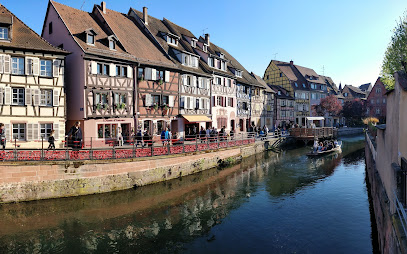
Parc du Champ de Mars
Discover the serene beauty of Parc du Champ de Mars, a lush haven in Colmar perfect for leisurely strolls, picnics, and community events.
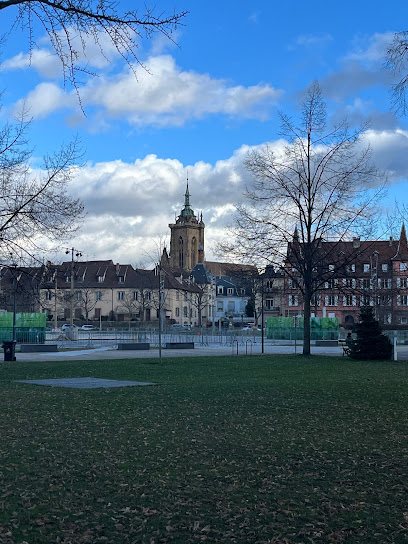
Unterlinden Museum
Explore the rich artistic heritage of the Alsace region at the Unterlinden Museum in Colmar, home to remarkable masterpieces and tranquil exhibits.
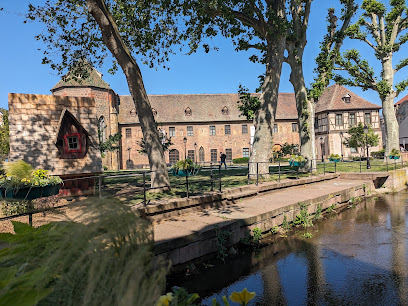
PETIT TRAIN TOURISTIQUE de COLMAR (VERT) - TRAIN'S
Explore the enchanting streets of Colmar aboard the Petit Train Touristique, a scenic ride through history and charm in Alsace.
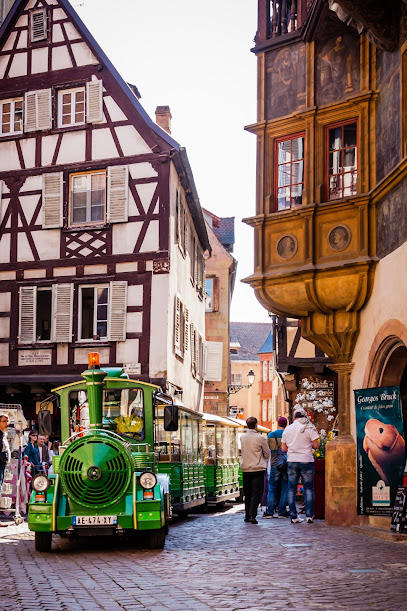
Musée du Jouet
Explore the Musée du Jouet in Colmar, a captivating toy museum filled with nostalgia and interactive displays for all ages.
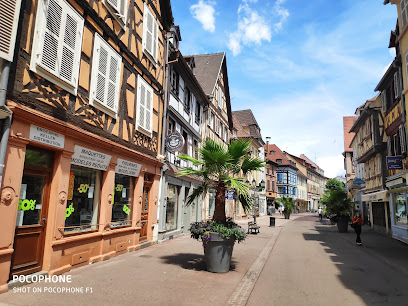
Statue de la Liberté
Discover the beauty and significance of the Statue of Liberty in Colmar, a stunning tribute to freedom and a captivating landmark in Alsace.
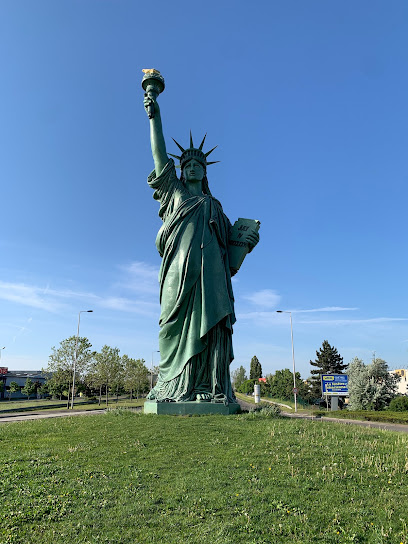
Collégiale Saint-Martin de Colmar
Discover the stunning Gothic architecture and rich history of the Collégiale Saint-Martin in Colmar, a must-see for every traveler.
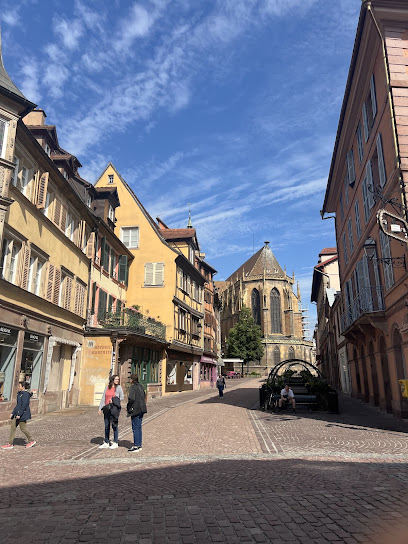
The Village Hansi & its Museum
Experience the enchanting blend of art, history, and local culture at The Village Hansi & its Museum in Colmar, a hidden gem for tourists.
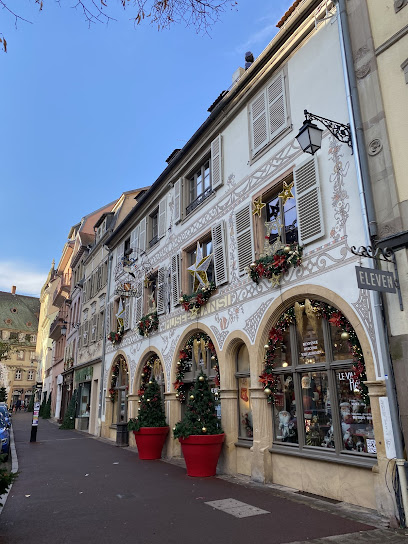
Les Bateliers
Experience the essence of Alsatian cuisine at Les Bateliers, a top French restaurant in picturesque Colmar, where every meal is a celebration of local flavors.
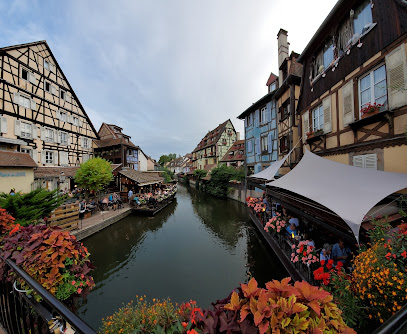
Dominican Church
Explore the Dominican Church in Colmar, a stunning Gothic architectural gem filled with rich history and serene beauty, perfect for every traveler.

Tourist Office of Colmar
Explore the enchanting town of Colmar through the comprehensive resources and friendly guidance of the Tourist Office, your gateway to Alsatian culture.
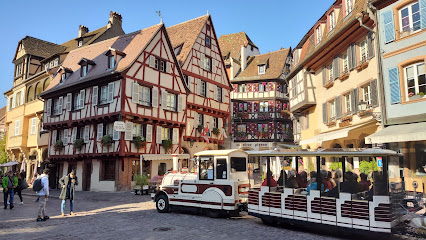
Fontaine dédiée à l'Amiral Bruat
Explore the beauty and historical significance of the Fontaine dédiée à l'Amiral Bruat in Colmar, a serene spot amidst picturesque surroundings.
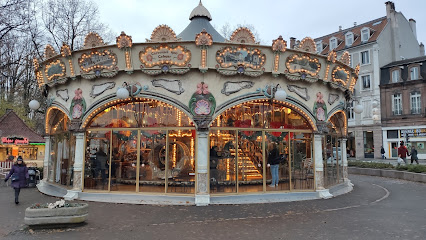
Choco Story Colmar
Explore the delicious world of chocolate at Choco Story Colmar, where history meets the art of confectionery in a delightful museum experience.
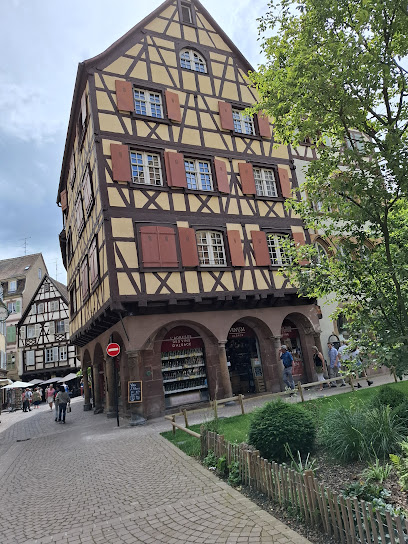
Musée Bartholdi
Explore the life and works of Frédéric Auguste Bartholdi at Musée Bartholdi in Colmar, a captivating art museum dedicated to the creator of the Statue of Liberty.
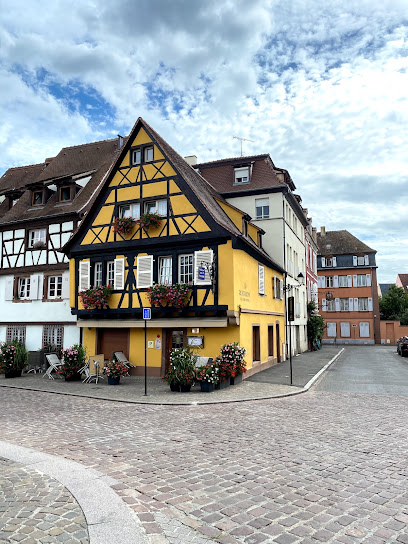
Théâtre Municipal
Explore the captivating Théâtre Municipal in Colmar, a historic venue offering diverse performances and a rich cultural experience in Alsace.
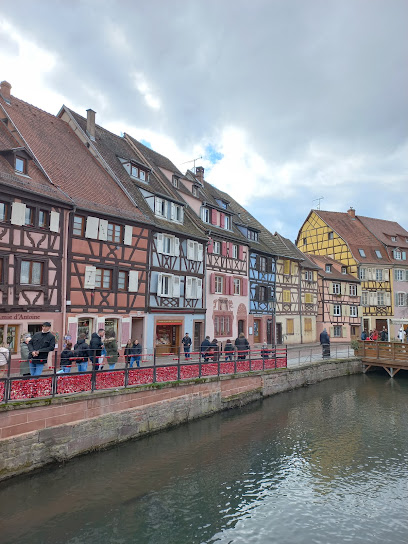
Unmissable attractions to see
Europa-Park
Experience the thrill and wonder of Europa-Park, Europe's largest amusement park, where adventure and culture come together in a magical setting.
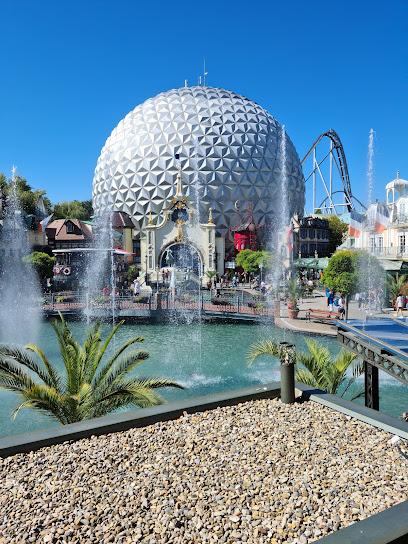
Château du Haut-Kœnigsbourg
Discover the majestic Château du Haut-Kœnigsbourg, a historic castle in Alsace offering stunning views, rich history, and captivating architecture.
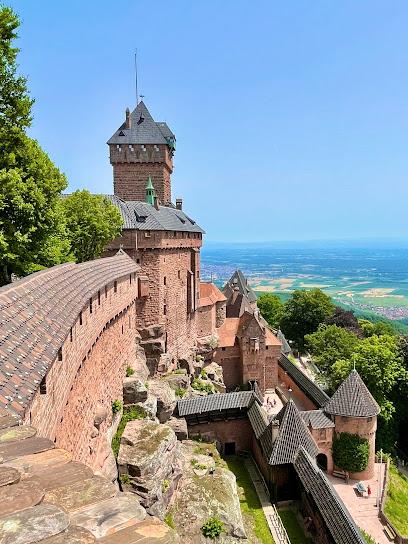
Freiburg Cathedral
Discover the breathtaking beauty and rich history of Freiburg Cathedral, a Gothic masterpiece in the heart of Freiburg im Breisgau.
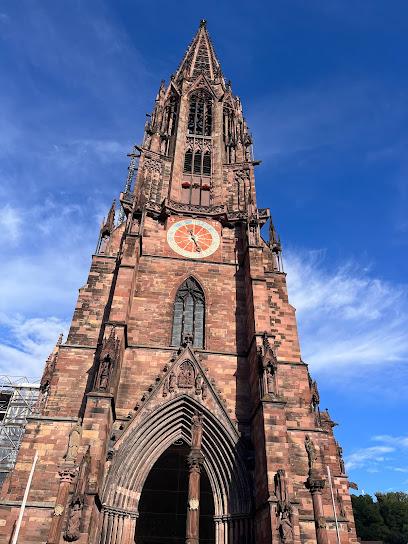
Parc du Champ de Mars
Explore the tranquil beauty of Parc du Champ de Mars in Colmar, a serene park that combines nature and history for a perfect day out.
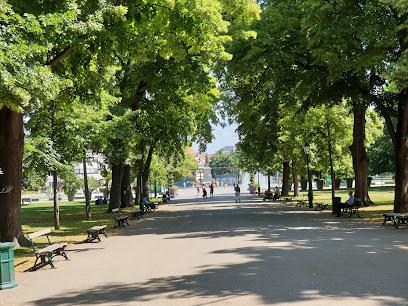
Château de Kaysersberg
Discover the enchanting Château de Kaysersberg, a medieval castle steeped in history, offering stunning views and a taste of Alsace's rich culture.
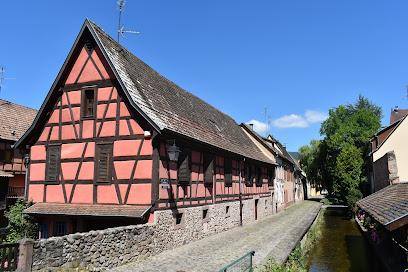
Struthof
Explore Struthof, a moving memorial and museum in Natzwiller, France, dedicated to the memory of Holocaust victims and the lessons of history.
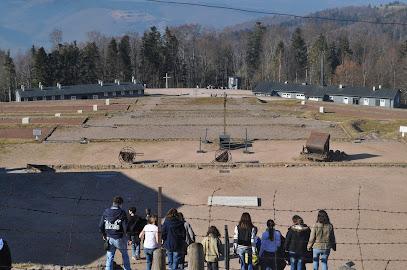
Stadtgarten Freiburg
Explore Stadtgarten Freiburg, a serene city park in Freiburg im Breisgau, where nature and culture intertwine for a memorable experience.
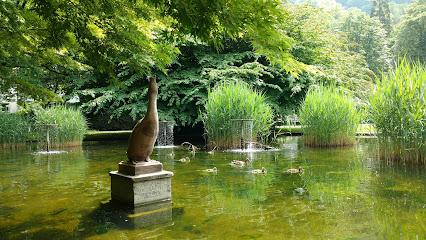
Unterlinden Museum
Uncover the artistic heritage of Colmar at Unterlinden Museum, home to stunning masterpieces and captivating exhibitions in a historic setting.
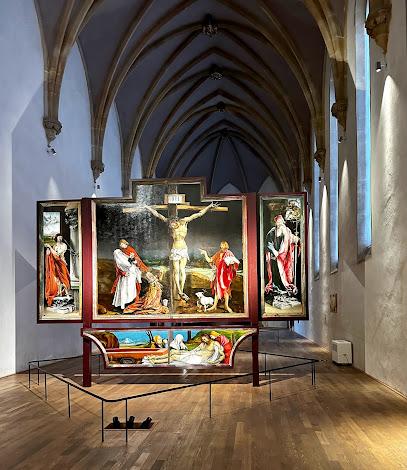
Musée du Jouet
Explore the enchanting Musée du Jouet in Colmar, a delightful toy museum showcasing a rich history of play from classic dolls to vintage games.
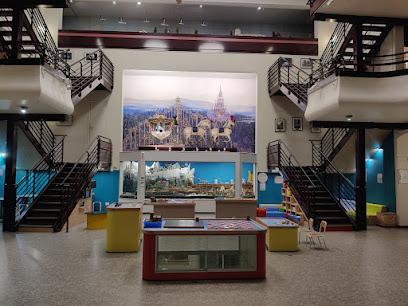
PETIT TRAIN TOURISTIQUE de COLMAR (VERT) - TRAIN'S
Discover Colmar's enchanting beauty on the Petit Train, a must-visit tourist attraction offering scenic views and rich history in Alsace, France.
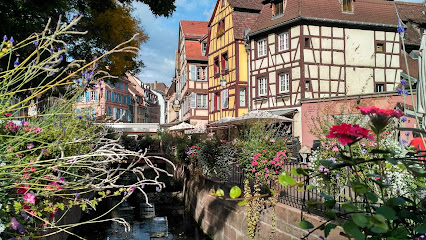
Collégiale Saint-Martin de Colmar
Explore the breathtaking Collégiale Saint-Martin in Colmar, a Gothic masterpiece with stunning architecture and rich history, nestled in a charming Alsatian town.
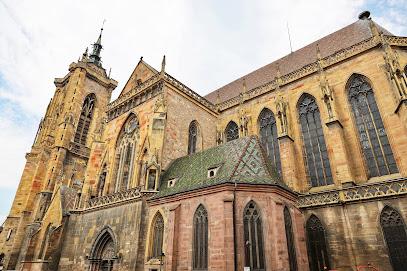
The Three Castles of Eguisheim
Discover the medieval charm of the Three Castles of Eguisheim, a captivating tourist attraction in the heart of Alsace, France, surrounded by stunning landscapes.
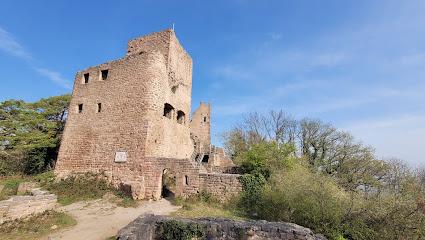
Aussichtsturm Schlossberg
Experience breathtaking panoramic views of Freiburg and the Black Forest at Aussichtsturm Schlossberg, a must-see observation deck for all visitors.
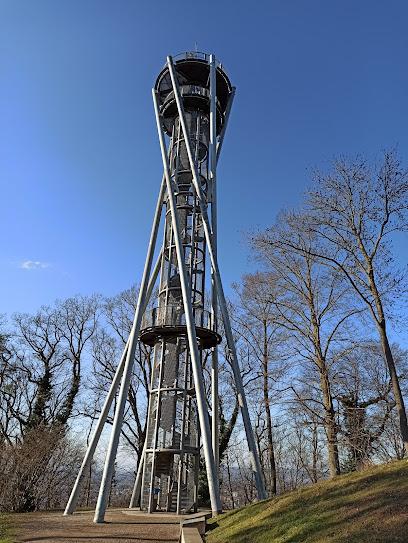
Freiburg Concert Hall
Discover the vibrant cultural scene at Freiburg Concert Hall, where exceptional music performances and architectural beauty await you in the heart of the city.
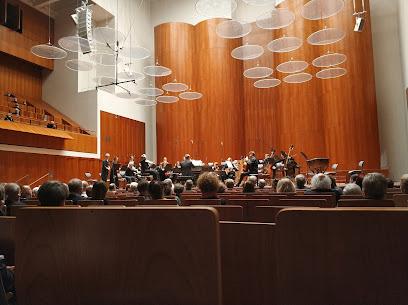
The Village Hansi & its Museum
Discover the enchanting blend of art and culture at The Village Hansi & its Museum in Colmar - a true Alsatian experience.
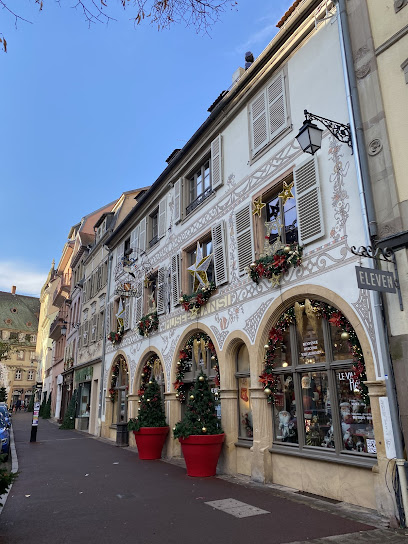
Essential places to dine
Le Fer Rouge
Experience authentic French cuisine at Le Fer Rouge in Colmar - where tradition meets modernity in an unforgettable dining experience.
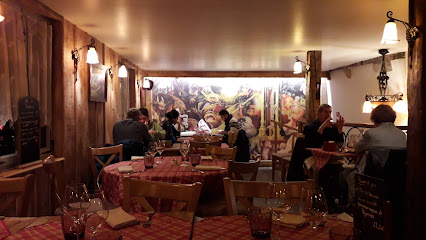
L'Amandine
Experience authentic French cuisine at L'Amandine in Colmar - where tradition meets taste in a charming atmosphere.
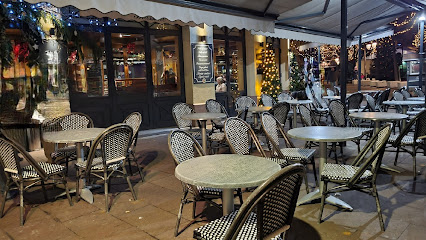
Restaurant Pfeffel
Experience authentic Alsatian flavors at Restaurant Pfeffel in Colmar, where tradition meets modern dining in a charming atmosphere.
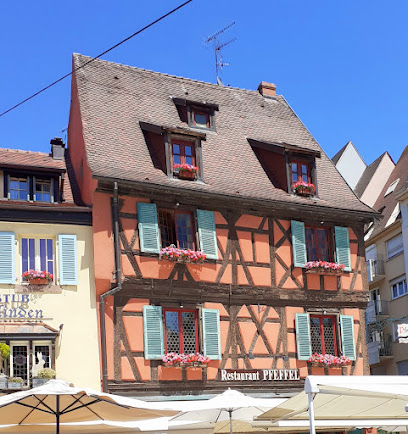
Schwendi Bier und Wistub
Discover authentic Alsatian flavors at Schwendi Bier und Wistub in Colmar – where tradition meets taste in every delightful dish.

Restaurant Au Koïfhus
Experience authentic French cuisine at Restaurant Au Koïfhus in Colmar, where tradition meets flavor in a charming setting.
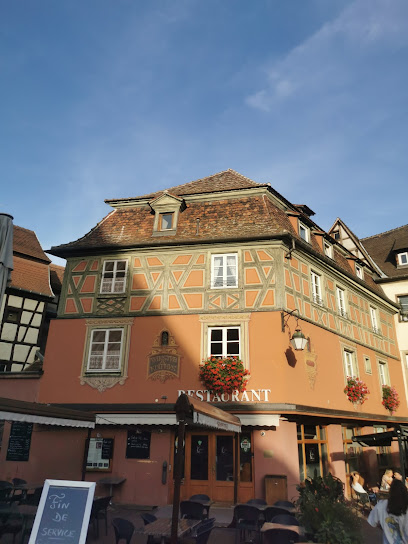
Le Stam
Experience authentic Alsatian cuisine at Le Stam in Colmar—where traditional flavors meet cozy ambiance.
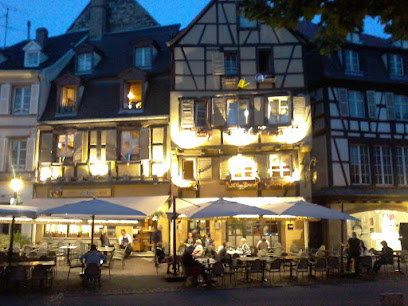
Au Bureau
Discover Au Bureau: A lively restaurant and bar in Colmar offering delicious French cuisine and an inviting atmosphere for all visitors.
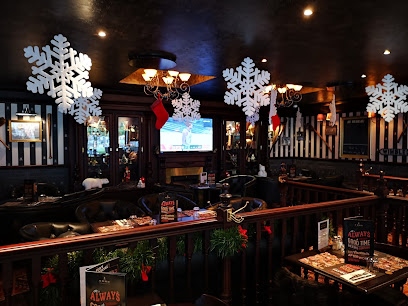
Sahmeran
Discover Sahmeran in Colmar: A unique fusion of Turkish and French cuisine that delights every palate.
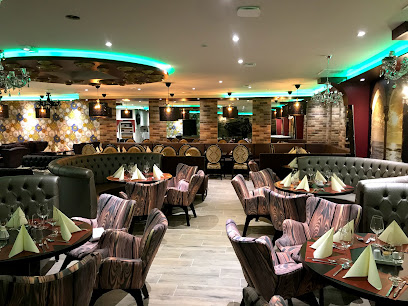
Jadis et Gourmande
Experience the charm of Alsatian cuisine at Jadis et Gourmande, where delightful flavors meet whimsical decor in beautiful Colmar.
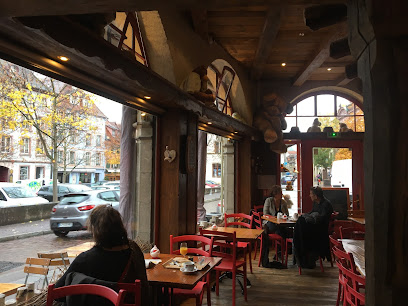
Restaurant La Soï
Experience authentic French cuisine in Colmar at Restaurant La Soï – where tradition meets flavor in a cozy atmosphere.
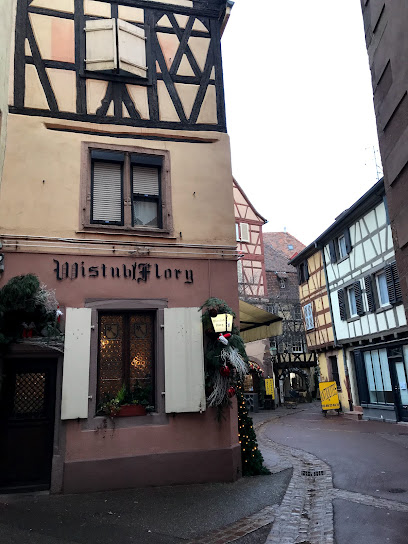
Brasserie des Tanneurs
Savor authentic French cuisine in Colmar's scenic Brasserie des Tanneurs - a culinary delight blending tradition and taste.
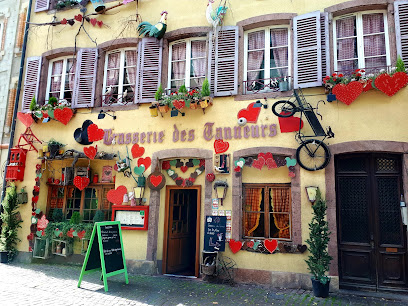
WISTUB BRENNER
Discover authentic Alsatian flavors at Wistub Brenner, a charming restaurant in Colmar offering delightful French cuisine in an inviting atmosphere.
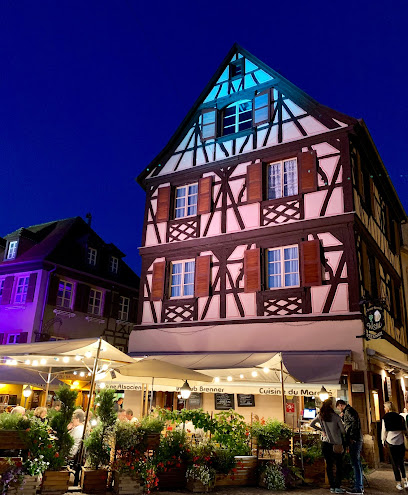
Aux Armes de Colmar
Discover authentic Alsatian cuisine at Aux Armes de Colmar – where tradition meets flavor in a cozy setting.
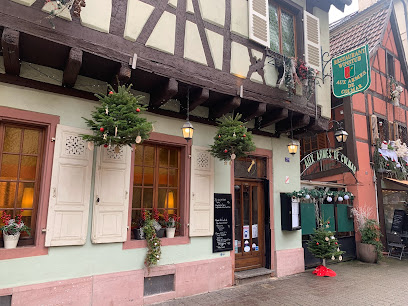
La Stub
Experience authentic Alsatian cuisine at La Stub in Colmar—where tradition meets taste in a charming atmosphere.
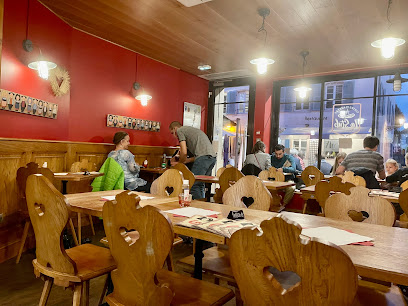
Les Bateliers
Discover authentic French cuisine at Les Bateliers in Colmar – where every meal is a celebration of Alsatian flavors and warm hospitality.
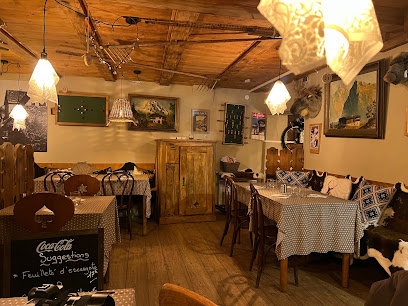
Markets, malls and hidden boutiques
Centre Commercial Shop'in Houssen
Discover the ultimate shopping experience at Centre Commercial Shop'in Houssen, where fashion, dining, and entertainment come together in one vibrant destination.
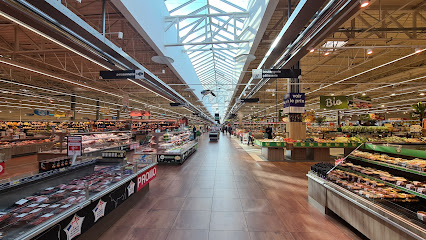
Marché Couvert Colmar
Discover the culinary heart of Colmar at Marché Couvert, where local produce and specialty foods create a vibrant market experience.

Nature and Discoveries
Explore the enchanting Nature and Discoveries gift shop in Colmar, where eco-friendly products and unique souvenirs await every traveler.
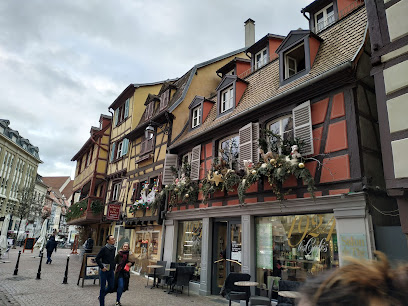
PIMKIE
Discover the latest women's fashion trends at PIMKIE in Colmar, your go-to boutique for stylish clothing and accessories.
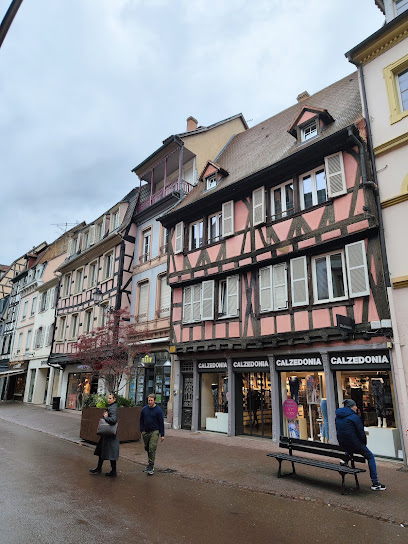
Le Comptoir de Mathilde
Discover the exquisite world of artisanal chocolates at Le Comptoir de Mathilde in Colmar, where traditional French craftsmanship meets sweet indulgence.
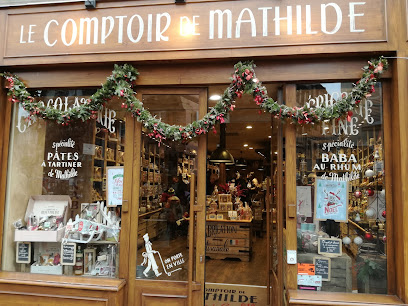
Konjaku
Discover the essence of Japan at Konjaku, a charming gift shop in Colmar offering unique crafts, home goods, and martial arts supplies.
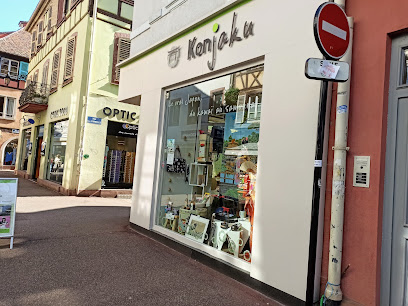
The Home of Marseille Soap
Explore The Home of Marseille Soap in Colmar – a treasure trove of artisanal soaps that embodies the spirit of Provence.
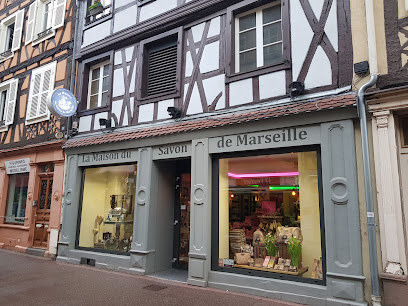
Au Vieux Pignon
Explore Au Vieux Pignon, a charming gift shop in Colmar offering unique Alsatian souvenirs and cultural treasures.
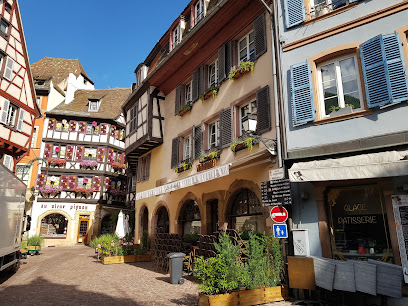
Plaisir de Créer
Explore your creative side at Plaisir de Créer, Colmar's charming craft store with supplies and workshops for every artisan.
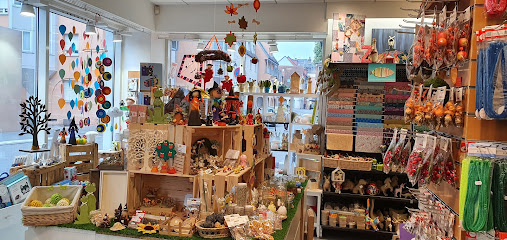
Alsace Boutique
Explore Alsace Boutique in Colmar for unique gifts and handcrafted pottery that embody the spirit of the region.
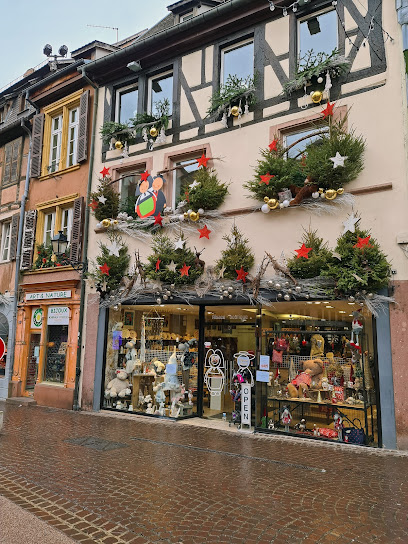
Fortwenger Spices Breads
Explore the exquisite flavors of Fortwenger Spices Breads in Colmar, your gateway to gourmet spices and culinary inspiration.
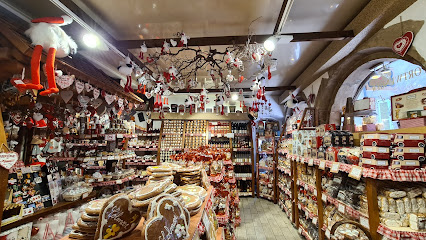
Maison 123
Discover the elegance of French fashion at Maison 123, a charming boutique in Colmar offering a unique selection of women's clothing.
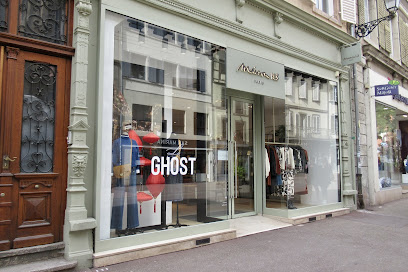
Grain de Malice
Explore the chic offerings of Grain de Malice in Colmar, where style meets the charm of Alsace, perfect for fashion-forward travelers.
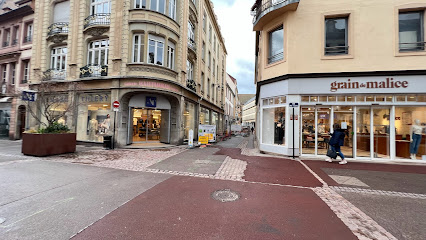
Bretzel Airlines - Colmar
Explore Bretzel Airlines in Colmar for unique Alsatian gifts and authentic local treats, a must-visit for every traveler in the region.
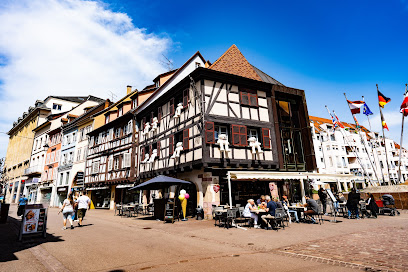
Goodvibes Colmar
Explore stylish women's clothing, leather goods, and shoes at Goodvibes Colmar, the boutique offering a unique shopping experience in the heart of Alsace.
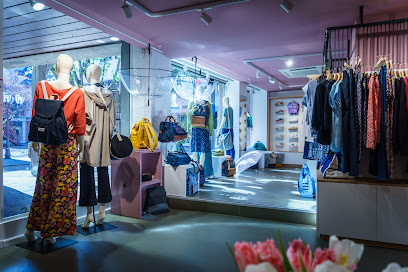
Essential bars & hidden hideouts
The 3 Monkeys
Discover the lively atmosphere and delightful drinks at The 3 Monkeys, a vibrant pub in the heart of Colmar's charming streets.
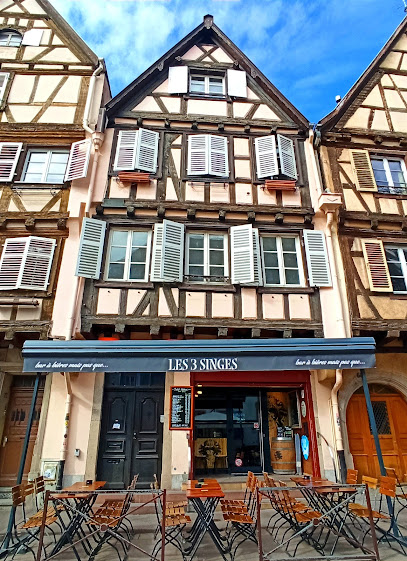
Les Incorruptibles
Experience the vibrant atmosphere and delightful drinks at Les Incorruptibles, a must-visit bar in the heart of Colmar, France.
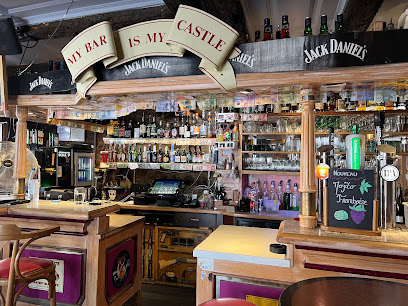
O'Rabbit's Irish Pub
Discover the vibrant atmosphere and authentic flavors of Ireland at O'Rabbit's Irish Pub in Colmar, a perfect spot for food and fun.
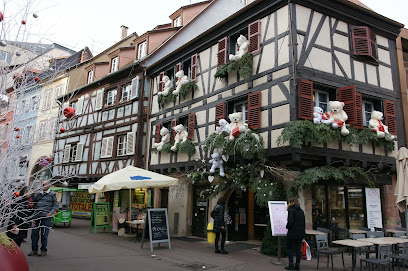
Pub James'On
Experience the vibrant atmosphere and delicious flavors at Pub James'On, a charming pub in the heart of Colmar, France.
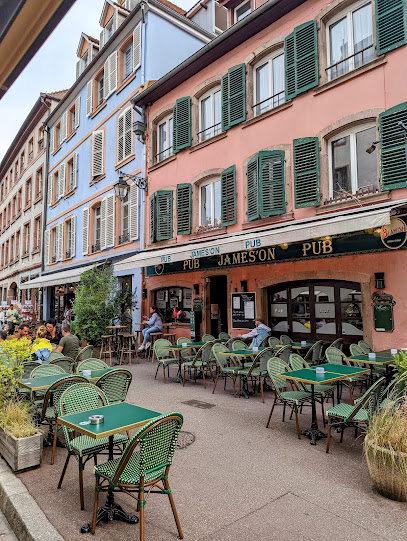
Le Cercle Des Aromes
Discover the charm of Alsace at Le Cercle Des Aromes, where exquisite wines and local cuisine come together in a cozy atmosphere.
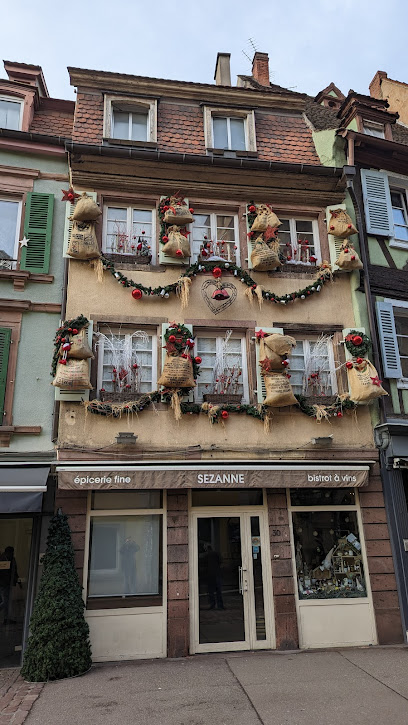
JAF Colmar : Bar & Caviste en bières, vins et spiritueux
Experience the best of Alsace with a diverse selection of beers and wines at JAF Colmar, the perfect spot for relaxation and socializing.

L’Un des Sens | Assiettes gourmandes et canons à partager au bar à vin intimiste du vieux Colmar
Discover the delightful fusion of gourmet dishes and exquisite wines at L’Un des Sens, your intimate wine bar in Colmar.

Le Murphy's
Experience the vibrant spirit of Ireland at Le Murphy's, the heart of Colmar's nightlife with live music and a diverse drink menu.
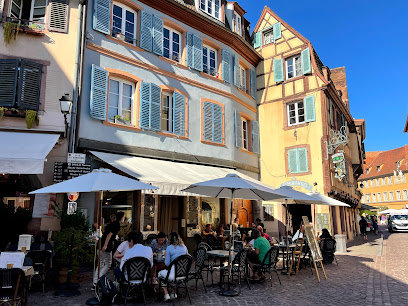
Le Major'L
Experience the essence of Alsatian wine culture at Le Major'L in Colmar, a cozy wine bar perfect for relaxation and enjoyment.
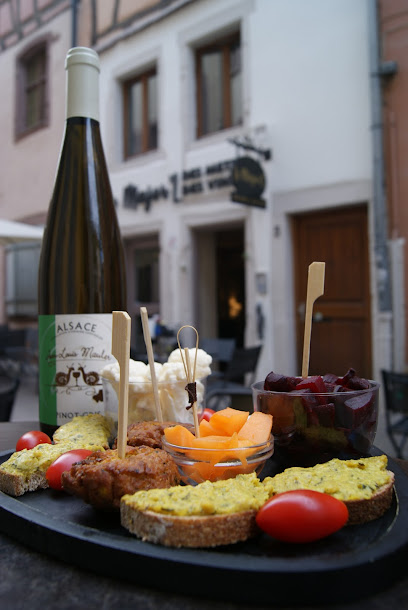
Rhum N' Co
Discover the vibrant nightlife of Colmar at Rhum N' Co, where exquisite cocktails and delicious tapas create an unforgettable experience.

Brasserie St. Cru
Discover the local brewing culture at Brasserie St. Cru, a vibrant brewpub in Colmar offering a diverse selection of craft beers and a warm atmosphere.
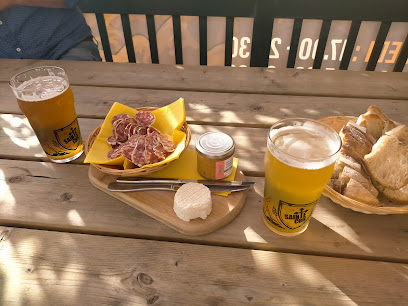
DEER AND BEER
Experience the charm of Colmar at Deer and Beer, where local brews and delicious fare come together in a rustic atmosphere.
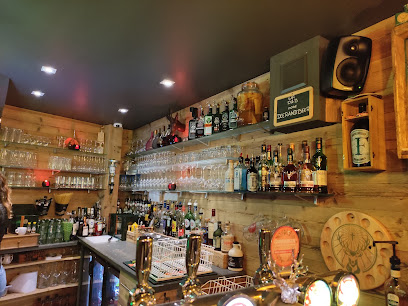
Chez Moi
Experience the charm of Colmar at Chez Moi, a cozy bar and café offering delightful drinks and a welcoming atmosphere.

Au Temps d’un verre, Bar à vin, Dégustation et Vente de Vin Centre-Ville, Colmar, Alsace
Experience the best of Alsace wines at Au Temps d’un Verre, a charming wine bar in the heart of Colmar for a delightful tasting journey.
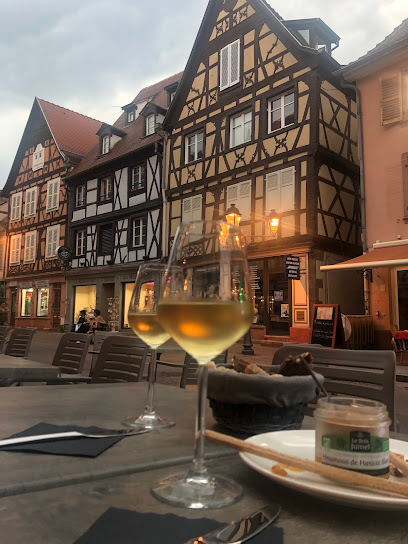
La Folie
Discover the exquisite wines and cocktails of La Folie, a must-visit wine bar in Colmar, where every sip tells a story of tradition and passion.
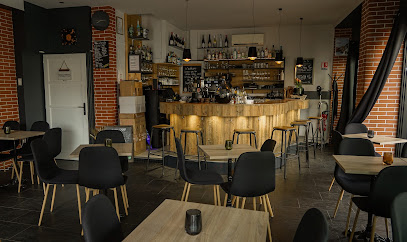
Local Phrases
-
- HelloBonjour
[bon-zhoor] - GoodbyeAu revoir
[oh re-vwar] - YesOui
[wee] - NoNon
[nohn] - Please/You're welcomeS'il vous plaît/De rien
[seel voo pleh/duh ree-ahn] - Thank youMerci
[mehr-see] - Excuse me/SorryExcusez-moi/Désolé
[ex-kew-zay mwah/day-zoh-lay] - How are you?Comment ça va?
[koh-mohn sah vah] - Fine. And you?Bien. Et vous?
[byen. ay voo] - Do you speak English?Parlez-vous anglais?
[par-lay voo ahn-glay] - I don't understandJe ne comprends pas
[zhuh nuh kohm-prahn pah]
- HelloBonjour
-
- I'd like to see the menu, pleaseJe voudrais voir le menu, s'il vous plaît
[zhuh voo-dray vwar luh meh-nyuh, seel voo pleh] - I don't eat meatJe ne mange pas de viande
[zhuh nuh mahnj pah duh vyand] - Cheers!Santé!
[sahn-tay] - I would like to pay, pleaseJe voudrais payer, s'il vous plaît
[zhuh voo-dray pay-ay, seel voo pleh]
- I'd like to see the menu, pleaseJe voudrais voir le menu, s'il vous plaît
-
- Help!Au secours!
[oh suh-koor] - Go away!Allez-vous en!
[ah-lay voo zahn] - Call the Police!Appelez la police!
[ah-puh-lay lah poh-lees] - Call a doctor!Appelez un médecin!
[ah-puh-lay uh mayd-sahn] - I'm lostJe suis perdu
[zhuh swee pair-doo] - I'm illJe suis malade
[zhuh swee mah-lahd]
- Help!Au secours!
-
- I'd like to buy...Je voudrais acheter...
[zhuh voo-dray zah-shtay...] - I'm just lookingJe regarde juste
[zhuh ruh-gard zhoost] - How much is it?Combien ça coûte?
[kohm-byen sah koot] - That's too expensiveC'est trop cher
[say troh shair] - Can you lower the price?Pouvez-vous baisser le prix?
[poo-vay voo bay-say luh pree]
- I'd like to buy...Je voudrais acheter...
-
- What time is it?Quelle heure est-il?
[kell ur ay-teel] - It's one o'clockIl est une heure
[eel ay tun ur] - Half past (10)Dix et demi
[dees ay dem-ee] - MorningMatin
[mah-tahn] - AfternoonAprès-midi
[ah-pray mee-dee] - EveningSoir
[swahr] - YesterdayHier
[yehr] - TodayAujourd'hui
[oh-zhoor dewee] - TomorrowDemain
[duh-mahn] - 1Un/Une
[uhn/oon] - 2Deux
[duh] - 3Trois
[twah] - 4Quatre
[kah-truh] - 5Cinq
[sank] - 6Six
[sees] - 7Sept
[set] - 8Huit
[weet] - 9Neuf
[nuff] - 10Dix
[dees]
- What time is it?Quelle heure est-il?
-
- Where's a/the...?Où est un/le...?
[oo ay uh/luh] - What's the address?Quelle est l'adresse?
[kell ay lah-dress] - Can you show me (on the map)?Pouvez-vous me montrer (sur la carte)?
[poo-vay voo muh mohn-tray (soor lah kart)] - When's the next (bus)?Quand est le prochain (bus)?
[kahn ay luh proh-shahn (bus)] - A ticket (to ....)Un billet (pour ....)
[uhn bee-yay (poor)]
- Where's a/the...?Où est un/le...?
History of Colmar
-
Colmar, located in the northeastern region of Alsace, France, was first mentioned in historical records in the 9th century. It was founded during the Carolingian dynasty and became a significant market town in the medieval period. Its strategic location near the Rhine River made it an important hub for trade and commerce.
-
In 1226, Colmar was granted the status of a Free Imperial City by the Holy Roman Emperor Frederick II. This allowed the city to govern itself, collect taxes, and maintain a degree of autonomy. The city flourished under this status, developing a rich urban culture and a robust economy.
-
Colmar experienced significant growth and prosperity during the Renaissance. This period saw the construction of many of the city's most famous buildings, including the House of Heads, adorned with 106 grotesque masks, and the Pfister House, which showcases a blend of medieval and Renaissance architectural styles. The city's well-preserved old town is a testament to its historical affluence.
-
The Thirty Years' War (1618-1648) had a substantial impact on Colmar, leading to periods of occupation by both Swedish and Imperial troops. Following the war, the Treaty of Westphalia in 1648 resulted in Alsace, including Colmar, being ceded to France. This marked the beginning of French influence in the region.
-
During the French Revolution, Colmar, like many other cities, witnessed significant social and political upheaval. The city became part of the Haut-Rhin department in 1790. The 19th century brought industrialization, which transformed Colmar’s economy and infrastructure, contributing to its modern development.
-
Colmar's strategic location made it a contested city during both World Wars. It was annexed by Germany after the Franco-Prussian War in 1871, returned to France in 1918, annexed again by Nazi Germany in 1940, and finally liberated by the Allies in 1945. These turbulent times left a profound impact on the city's identity and architecture.
-
Colmar is renowned for its cultural and artistic heritage. It is the birthplace of the famous sculptor Frédéric Auguste Bartholdi, creator of the Statue of Liberty. The city is also home to the Unterlinden Museum, which houses the Isenheim Altarpiece, a masterpiece of German Renaissance art. Colmar’s vibrant cultural scene continues to attract artists and visitors alike.
-
Today, Colmar is celebrated for its picturesque old town, with cobblestone streets, half-timbered houses, and charming canals. It is a major tourist destination, known for its Alsatian wine route and annual Christmas markets. The city's rich history and well-preserved architecture offer visitors a unique glimpse into its storied past.
Colmar Essentials
-
Colmar is located in the Alsace region of northeastern France. The nearest international airport is EuroAirport Basel-Mulhouse-Freiburg, approximately 70 kilometers away. From the airport, you can take a train or a bus to Colmar. The journey by train takes around 45 minutes to 1 hour. Alternatively, you can fly into Strasbourg International Airport, which is about 75 kilometers from Colmar. Direct trains from Strasbourg to Colmar take approximately 30-40 minutes. Colmar is also well-connected by train to major French cities such as Paris and Lyon.
-
Colmar is a compact city, and many of its attractions are within walking distance. For exploring the city, you can rent a bike or use the local bus service (TRACE). Taxis are readily available and can be hailed on the street or booked in advance. For those interested in exploring the surrounding Alsatian countryside, renting a car is a convenient option. The city also offers a small tourist train that provides guided tours around the old town.
-
The official currency in France is the Euro (EUR). Credit cards are widely accepted in hotels, restaurants, and shops in Colmar. However, it is advisable to carry some cash for smaller establishments or market purchases. ATMs are available throughout the city, and you can use your international cards to withdraw cash. Most establishments also accept contactless payment methods.
-
Colmar is generally a safe city for tourists. However, it is advisable to take standard precautions, such as avoiding poorly lit areas at night and keeping an eye on your belongings in crowded places. There are no specific high-crime areas targeting tourists in Colmar, but it is always best to stay vigilant and aware of your surroundings, especially in busy tourist areas.
-
In case of emergency, dial 112, the European emergency number, for immediate assistance. Colmar has a local police station and medical facilities, including the Pasteur Hospital. It is recommended to have travel insurance that covers medical emergencies. For minor health issues, pharmacies are available throughout the city where you can purchase over-the-counter medications.
-
Fashion: Do dress stylishly but comfortably. Avoid overly casual attire when dining out at nicer restaurants. Religion: Do respect local customs and traditions, especially when visiting religious sites. Public Transport: Do validate your ticket before boarding buses or trains. Don't eat or drink on public transport. Greetings: Do greet people with a friendly 'Bonjour' and a handshake. Eating & Drinking: Do try local specialties like Tarte Flambée and Alsatian wines. Don't rush through meals; dining is a leisurely activity in France.
-
To experience Colmar like a local, visit the Marché Couvert (covered market) for fresh produce and local delicacies. Explore the lesser-known neighborhoods, like the Quartier des Tanneurs, for a more authentic experience. Participate in local festivals and events, such as the Colmar International Festival and the Christmas markets. Rent a bike and explore the scenic vineyards and picturesque villages surrounding Colmar. Don't miss a boat ride through the canals of Little Venice for a unique perspective of the city.
Trending Landmark in Colmar
-
La Petite Venise
-
Parc du Champ de Mars
-
Unterlinden Museum
-
PETIT TRAIN TOURISTIQUE de COLMAR (VERT) - TRAIN'S
-
Musée du Jouet
-
Statue de la Liberté
-
Collégiale Saint-Martin de Colmar
-
The Village Hansi & its Museum
-
Les Bateliers
-
Dominican Church
-
Tourist Office of Colmar
-
Fontaine dédiée à l'Amiral Bruat
-
Choco Story Colmar
-
Musée Bartholdi
-
Théâtre Municipal
Nearby Cities to Colmar
-
Things To Do in Freiburg
-
Things To Do in Basel
-
Things To Do in Strasbourg
-
Things To Do in Nancy
-
Things To Do in Zurich
-
Things To Do in Bern
-
Things To Do in Lucerne
-
Things To Do in Thun
-
Things To Do in Stuttgart
-
Things To Do in Interlaken
-
Things To Do in Grindelwald
-
Things To Do in Murren
-
Things To Do in Heidelberg
-
Things To Do in Remich
-
Things To Do in Dudelange













